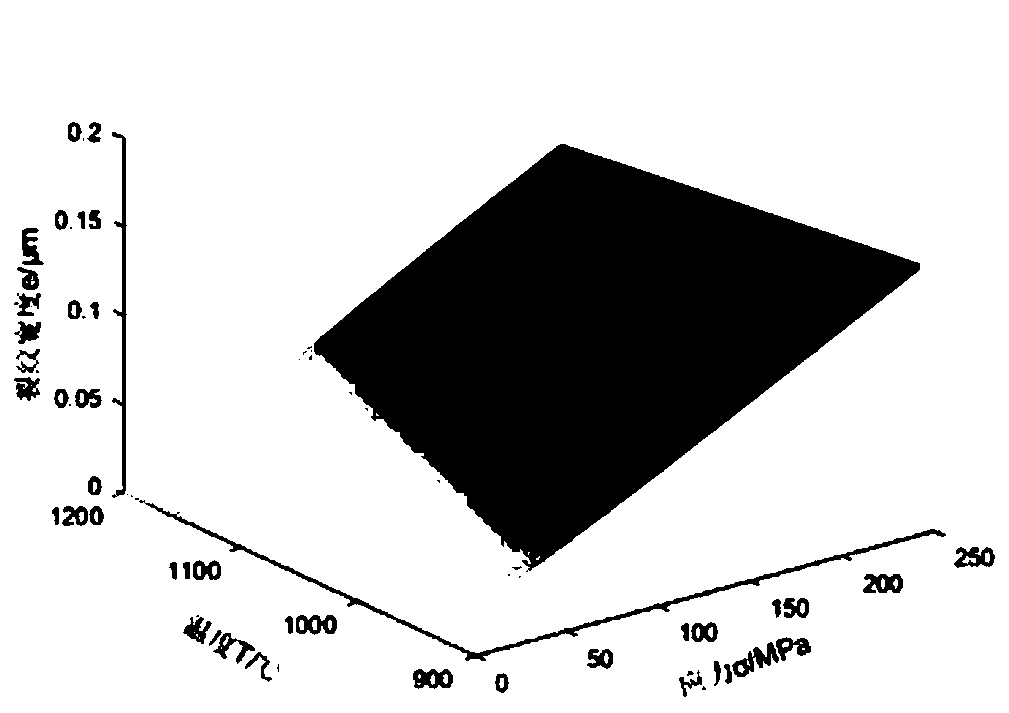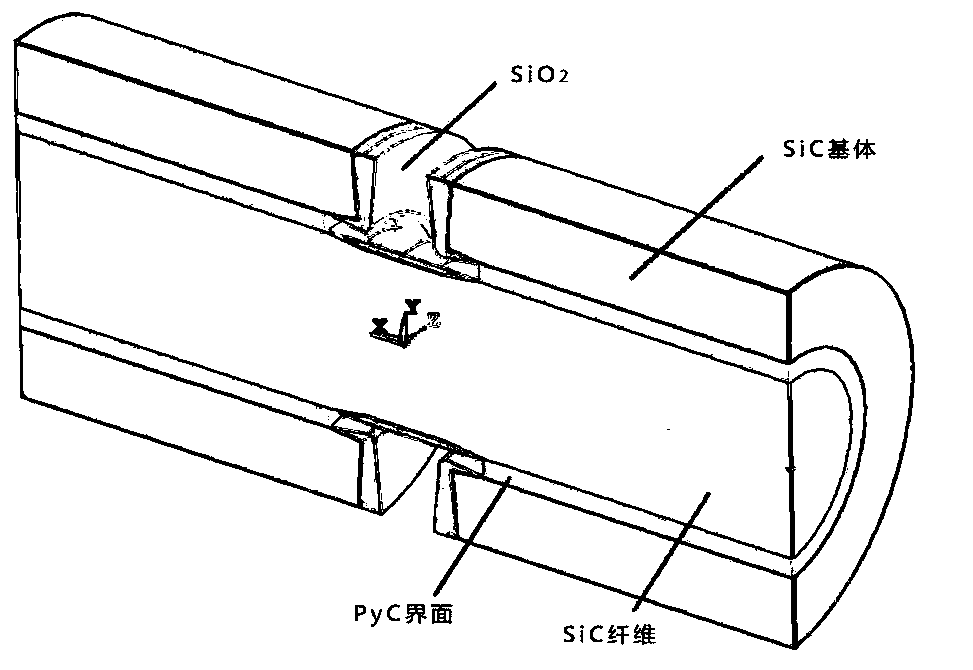A Prediction Method of Residual Stiffness of Ceramic Matrix Composites in Stress Oxidation Environment
A composite material, oxidizing environment technology, applied in design optimization/simulation, instrumentation, electrical digital data processing, etc., can solve problems such as the inability to accurately predict the residual stiffness change of unidirectional SiC/SiC materials
- Summary
- Abstract
- Description
- Claims
- Application Information
AI Technical Summary
Problems solved by technology
Method used
Image
Examples
Embodiment
[0125] In this embodiment, the unidirectional SiC / SiC material is subjected to a residual strength prediction method under a stress oxidation environment at 900-1200°C, which specifically includes the following steps:
[0126] Step (1), determining the number of cracks in the unidirectional SiC / SiC material matrix: considering the thermal residual stress, and according to the stress borne by the matrix under the action of tensile stress, determine the change in the number of cracks in the matrix with stress;
[0127] Step (1) specifically includes the following steps:
[0128] The strength of the unidirectional SiC / SiC material matrix has a certain dispersion, and the cracking of the matrix under stress is a random process. According to the Monte Carlo method, assuming that the failure probability of the matrix obeys the Poisson distribution, the probability that the matrix will fail due to at least one crack under stress is:
[0129] P(ξ=σ,η=L s )=1-exp{-M(A)}, N(A)≥1 (1) ...
PUM
 Login to view more
Login to view more Abstract
Description
Claims
Application Information
 Login to view more
Login to view more - R&D Engineer
- R&D Manager
- IP Professional
- Industry Leading Data Capabilities
- Powerful AI technology
- Patent DNA Extraction
Browse by: Latest US Patents, China's latest patents, Technical Efficacy Thesaurus, Application Domain, Technology Topic.
© 2024 PatSnap. All rights reserved.Legal|Privacy policy|Modern Slavery Act Transparency Statement|Sitemap



